We mean well—but sometimes we’re the problem. Many loving pet owners unknowingly trigger anxiety in their furry companions with habits that feel normal to us but confusing or scary to them. A loud goodbye, a missed routine, or even too much affection at the wrong time can send pets into a quiet spiral. The good news? Every mistake has a simple fix. And small changes can make a huge difference in how safe and loved your pet feels. If you’ve ever wondered why your dog hides during storms or your cat suddenly stops cuddling—this might be the guide that finally clicks.
Leaving Without Warning

Imagine a world where your loved ones disappear without a hint. For pets, slipping out without a goodbye is bewildering. This abrupt departure can spur anxiety as they grapple with the sudden loneliness. Understanding this, it’s vital to establish a calm routine.
A gentle pat or a soft word before leaving can ease the transition, indicating that the separation is temporary. Over time, pets begin to recognize these cues, reducing anxiety levels.
Such small gestures convey assurance, reinforcing their trust that you will return, maintaining their emotional well-being.
Inconsistent Routines

Pets thrive on predictability, much like humans. Inconsistent routines disrupt their understanding of the world, causing unease. Unsteady feeding, walking, or play schedules can shake their sense of security.
Animals, particularly dogs, are creatures of habit. Fixed routines help them anticipate events, providing comfort and stability.
By sticking to consistent schedules, you’re offering them a structured environment, minimizing anxiety triggers. This regularity not only ensures their mental peace but also strengthens the bond of trust between you and your pet, making them feel cherished and safe.
Too Much Noise

Imagine a world of constant noise, where every sound feels like a threat. For pets, loud environments can be overwhelming. The barrage of music, yelling, or banging noises triggers their fight-or-flight response, leaving them anxious.
Creating a tranquil space with soft background music can counteract this stress. It’s not just about reducing volume but crafting an atmosphere of calm.
By controlling the noise levels, you provide a haven for your pet, making them feel secure. This reassurance helps them relax and trust their surroundings, fostering a peaceful coexistence.
Punishing Instead of Redirecting
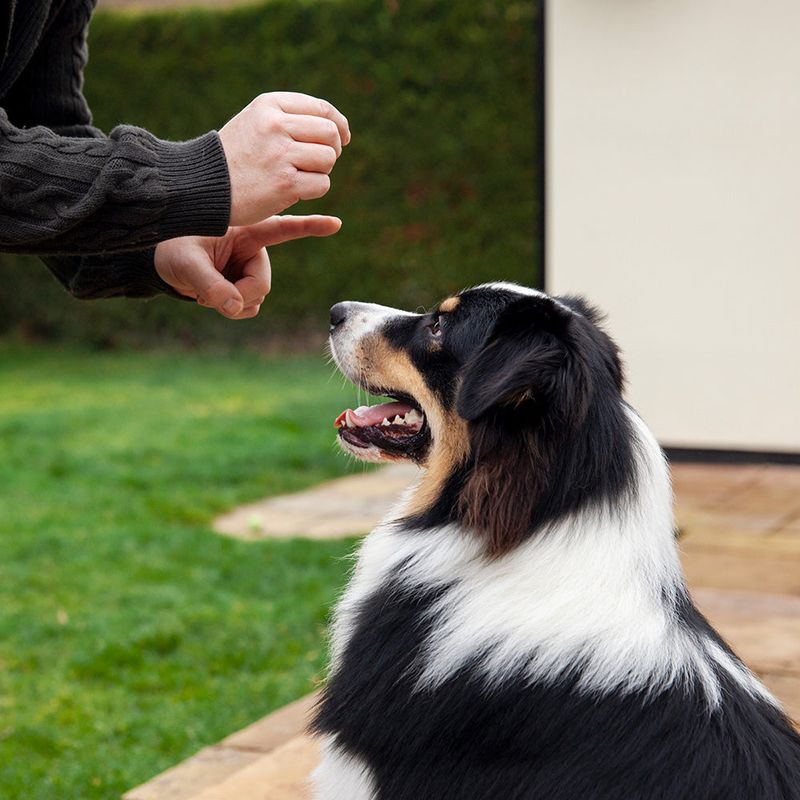
Imagine being reprimanded without understanding why. Pets experience similar confusion when punished. Scolding creates fear, not obedience. It erodes the bond, making pets wary and stressed.
Instead, redirect their energy! Guide them gently towards desired behaviors using positive reinforcement. This approach fosters a learning environment where mistakes are transformed into growth opportunities.
By understanding their perspective, you build a bridge of trust. Rewarding good behavior with treats or praise reinforces their confidence. Over time, this method cultivates a harmonious relationship, where your pet feels understood rather than judged.
Forcing Social Interactions

Imagine if every introduction felt like a confrontation. For pets, being forced into social interactions can be terrifying. Pushing them to meet people or other animals when they’re unwilling builds anxiety.
Respecting their social cues is key. Allow them to approach at their own pace, fostering a sense of control.
Over time, patience and understanding can transform fear into curiosity. By letting pets dictate their interactions, you instill trust. This autonomy helps them feel safer, knowing their boundaries are honored, ultimately leading to more confident and relaxed social engagements.
Ignoring Body Language
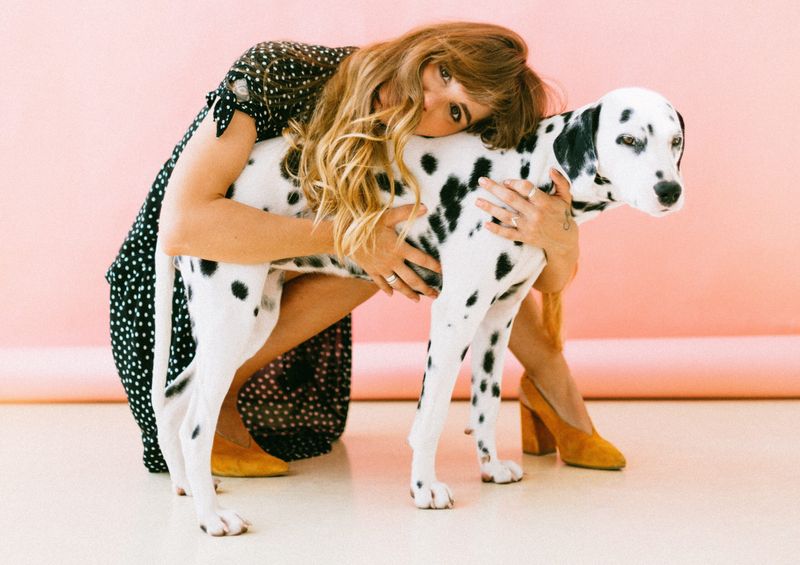
Imagine speaking without words, yet being ignored. Pets communicate primarily through body language. Ignoring signs like pacing, yawning, or hiding can escalate their anxiety.
Understanding these cues is crucial. They offer glimpses into their emotional state. Responding appropriately reinforces the trust that their feelings are acknowledged.
By attuning to their signals, you create a responsive environment. This attentiveness not only alleviates stress but also builds a deeper bond, showing pets they’re valued members of the family. Recognizing and respecting their non-verbal expressions fosters a relationship rooted in empathy and care.
Not Providing a Safe Space
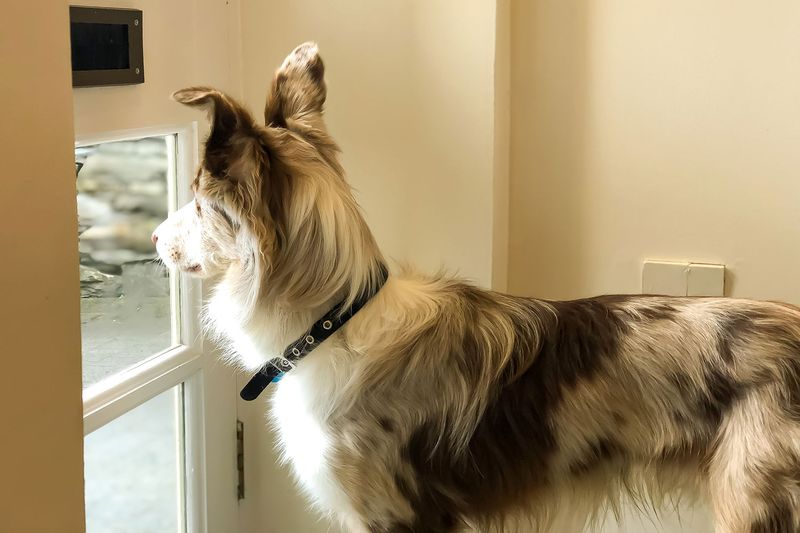
Imagine facing fears without a refuge. Pets without a safe space feel trapped, especially during stressful moments like thunderstorms or fireworks. A designated retreat offers comfort, allowing them a place to self-soothe.
Creating a cozy nook with blankets and familiar scents provides solace. It becomes their sanctuary, a place where they can retreat and feel secure.
By ensuring they have this haven, you’re reinforcing their well-being, showing you understand their needs. This thoughtful gesture strengthens the trust they have in you, building a reassuring and calm environment.
Overstimulating with Attention
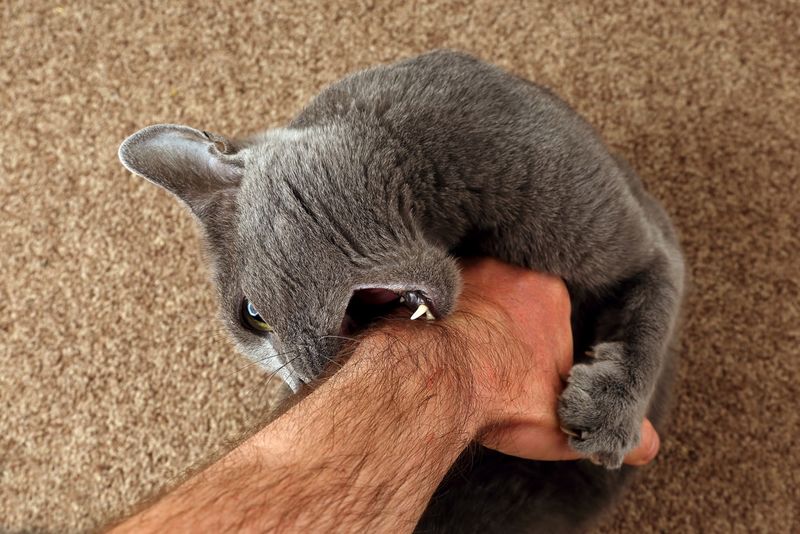
Imagine being overwhelmed with attention when solitude is needed. Some pets thrive on space rather than constant interaction. Overstimulating them with too much attention can elevate stress levels.
Understanding their need for boundaries is essential. This doesn’t mean withdrawal but respecting their signals for space.
By observing and responding to their cues, you honor their individuality. This mutual respect bolsters trust, allowing them to approach on their own terms. It’s about creating a balance where affection is shared, but never forced, nurturing a peaceful coexistence.
Create a Calm Goodbye Routine

Saying goodbye to a pet without causing anxiety is an art. A calm farewell routine signals that separation is normal.
Gently patting your pet or whispering reassuring words before leaving helps them associate your departure with positive feelings. This simple act can significantly reduce separation anxiety, making your pet’s waiting period more tolerable.
Over time, they’ll learn that goodbyes aren’t distressing, but merely a part of their day. This consistency reinforces their emotional security, allowing for a more relaxed and trusting relationship.
Stick to Consistent Schedules
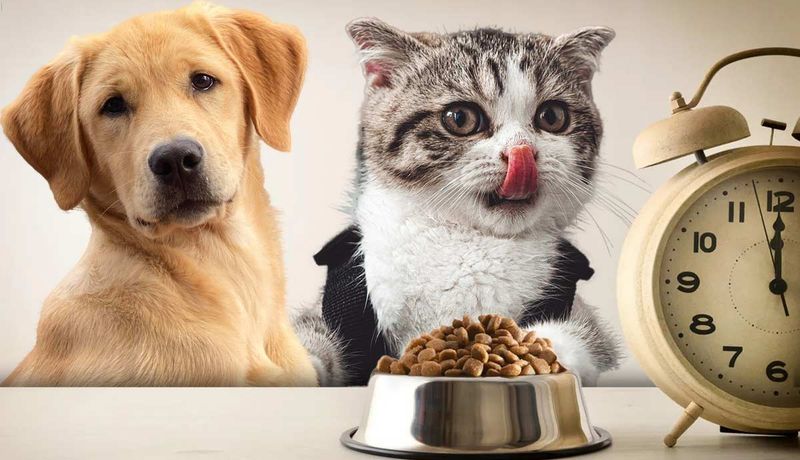
Picture a world where meals and playtime arrive unpredictably. For pets, it’s unsettling. Establishing a consistent schedule for feeding, walks, and play fosters a sense of security.
This predictability allows pets to anticipate daily activities, reducing anxiety-triggering uncertainty. Routine helps them understand that their needs will be met regularly.
By maintaining this structure, you’re not just providing physical care but emotional stability. It builds trust, showing pets that their world is reliable and safe, ultimately leading to a more harmonious living environment.
Lower the Volume
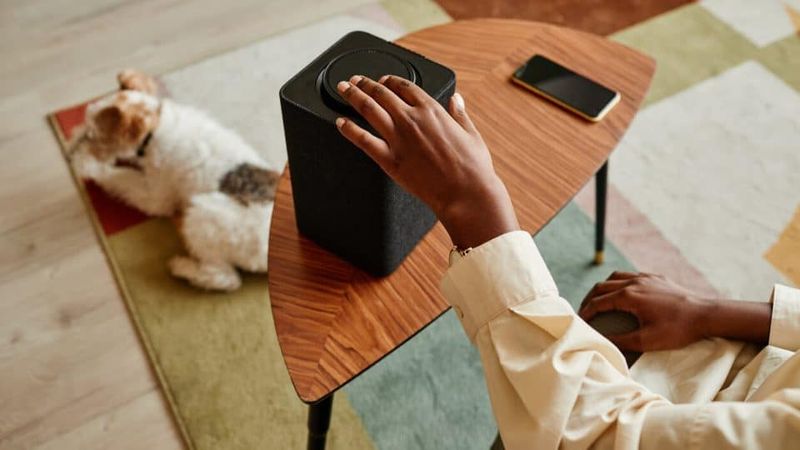
Imagine living in a world of perpetual noise. For sensitive pets, loud environments are stressful. Lowering the volume creates a peaceful atmosphere, easing their tension.
Soft music or gentle background noise can soothe their nerves, transforming their space into a sanctuary.
This simple adjustment shows consideration for their comfort. By reducing noise pollution, you foster a calm environment. This thoughtful action not only alleviates stress but also enhances their overall sense of safety and trust within their home.
Reward Calm Behavior

Imagine a world where actions are acknowledged and rewarded. For pets, recognizing and rewarding calm behavior reinforces positive conduct.
Instead of reacting harshly to mistakes, focus on what they do right. This positive reinforcement conveys that calmness is valued.
Treats, praise, or affection can serve as incentives. Over time, pets associate tranquility with rewards, naturally fostering a harmonious environment. This approach not only builds trust but also encourages self-regulation, creating a peaceful coexistence where pets feel appreciated and understood.
Let Pets Approach First

Consider how it feels to have autonomy over interactions. For pets, being allowed to approach at their own pace eases anxiety.
When meeting new people or animals, letting them initiate contact gives them a sense of control. This autonomy reassures them that their boundaries are respected.
Over time, they become more open and curious, reducing stress and building trust. This approach not only acknowledges their individuality but fosters a respectful relationship, where pets feel safe and empowered in social situations.
Learn Their Signals
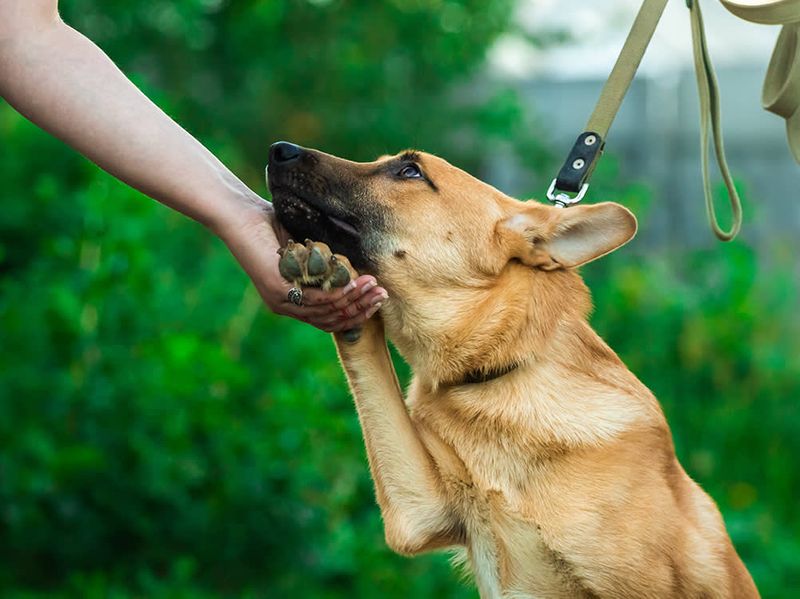
Think of a language without words, rich in signals. Pets communicate through body language, offering insights into their emotions.
Recognizing signs of stress—such as lip licking, yawning, or tail tucking—allows you to adjust your behavior. This attentiveness shows that their feelings are heard.
By learning their signals, you create a responsive bond, where pets feel acknowledged and secure. This understanding nurtures trust, reinforcing the belief that they are valued members of their household, leading to a more harmonious coexistence.
Set Up a Cozy Retreat
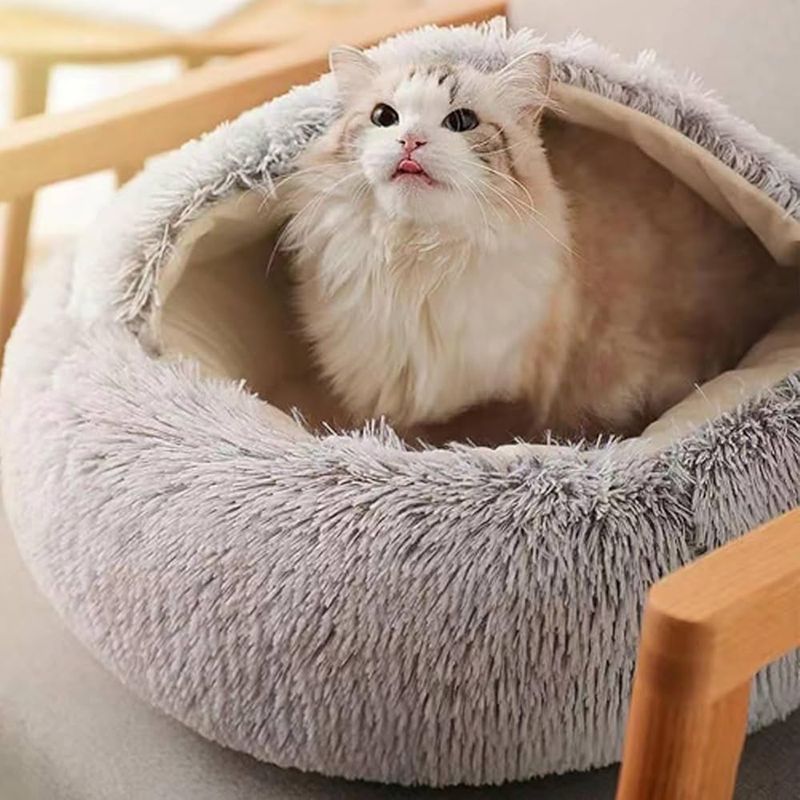
Envision a sanctuary tailored just for you. Pets need a cozy retreat, a place where they can unwind away from stress.
A dedicated space, adorned with blankets and familiar scents, offers them solace. This corner becomes their refuge, a haven of comfort.
Providing such a retreat reassures them of their safety, reinforcing emotional security. By acknowledging their need for privacy, you strengthen the trust between you and your pet, creating an environment where they feel cherished and at ease.
Respect Their Boundaries
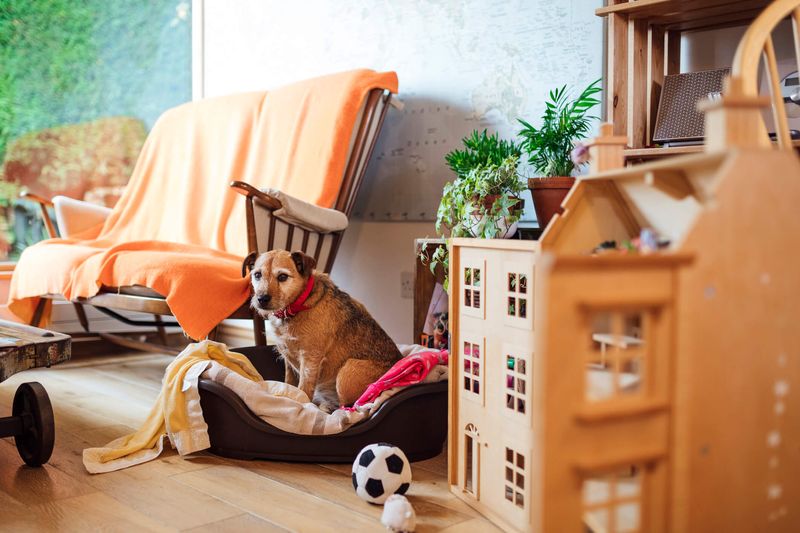
Imagine a world where your personal space is respected. For pets, having their boundaries acknowledged fosters trust.
Some animals crave solitude over interaction; understanding this preference is vital. It’s about balance—offering affection while respecting their need for space.
By honoring their boundaries, you strengthen the bond with your pet, showing that their comfort matters. This respect cultivates a trusting relationship, where they feel secure in their environment, knowing their choices are valued.
Enrich Their Environment
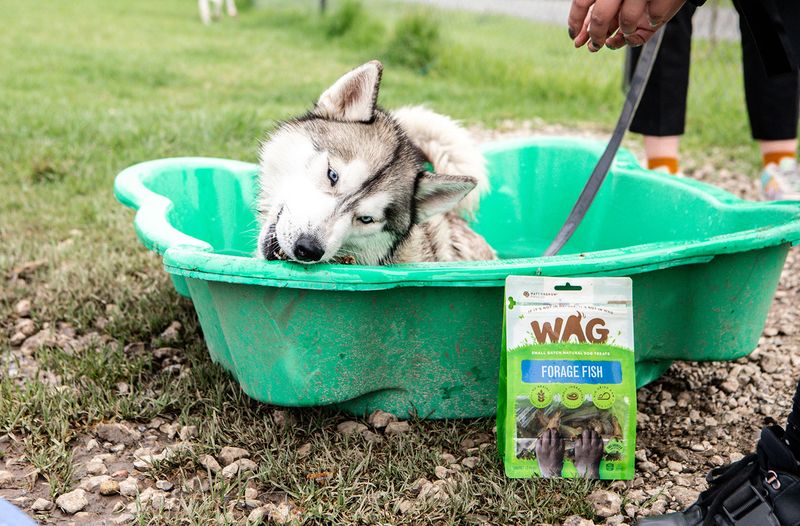
Think of a life filled with stimulating activities. Enriching their environment with toys, puzzles, or sniff walks combats boredom-induced anxiety.
These activities engage their minds, offering entertainment and mental stimulation. It’s not just about play but providing opportunities for exploration and learning.
This enrichment fosters a lively and engaging atmosphere, reducing stress and enhancing their well-being. By catering to their intellectual curiosity, you build trust, showing your commitment to their happiness and development.
Stay Calm Yourself
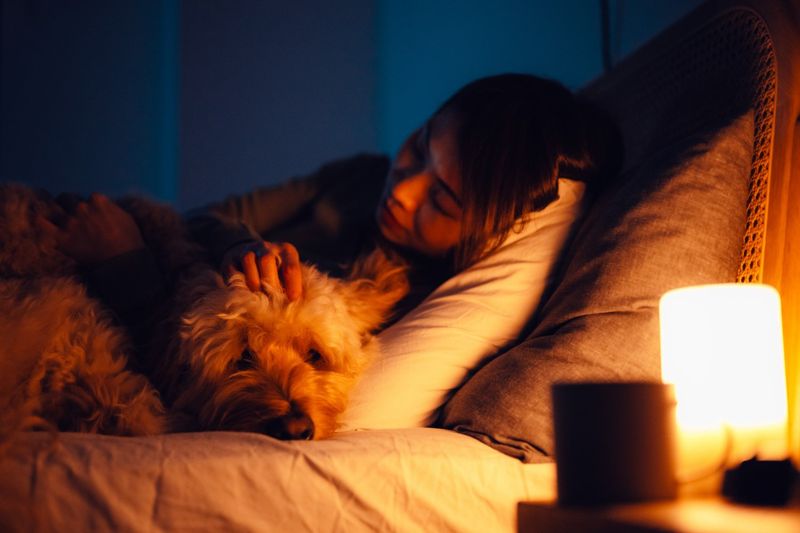
Picture a world where emotions are mirrored. Pets often reflect the energy of their owners. By remaining calm, you influence their emotional state, promoting tranquility.
A composed demeanor reassures them that everything is alright. This calmness radiates, helping pets feel secure and relaxed.
By managing your stress, you create a peaceful environment. This not only reduces anxiety in pets but strengthens the bond, showing them that they can trust your stability.

